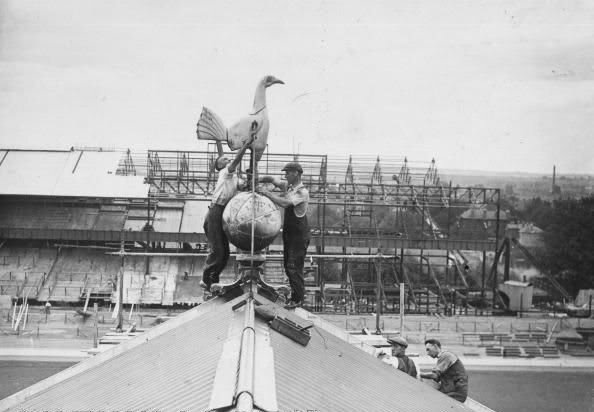2.1 History:
Formation and Early History:
Formed in 1882 by a group of grammar-school boys, a team known as Hotspur Football Club began life as a Tottenham-based extension of the Hotspur Cricket Club, of whom the school boys were also members. It was in 1884 that ‘Tottenham’ was added to the name, to signify the locale, and ‘Hotspur’ itself is thought to be a reference to Sir Henry Percy -- named as “Harry Hotspur” in Shakespeare’s play: Henry V -- who was said to have also been based in the area of Tottenham. They joined the amateur league known as the Southern League, rather than the nationwide Football League, and began plying their trade alongside other London-based teams.
For the next 15 years the team known colloquially as Spurs changed venues and kits a number of times, but in 1899 they settled finally upon both the lily-white and dark blue colours now familiar, and the ground now known as White Hart Lane, from which they have played ever since. Growing in stature rapidly, becoming a they became the first (and only) non-league team in history to win the famous FA Cup, doing so in 1901 whilst still not having joined the nationwide association leagues.
On the back of this and continued success in the Southern League, Tottenham finally joined the nationwide Second Division (Division 2) in the 1908/1909 season and within one season won promotion to the First Division (Division 1). The honeymoon was not to last, however, and in the 1914/1915 season Spurs were bottom of the league by the time World War I interrupted proceedings.
After World War I:
This low table position had drastic consequences when football was resumed at the war’s end, and when the Division 1 was expanded into 22 teams for the 1919/1920 season, not only were Tottenham demoted, but their local rivals Arsenal were promoted, despite having only finished 6th place in Division 2 the season before the war. This controversial decision, along with the decision to allow Chelsea to remain in Division 1 -- finishing in 19th, only one place above Spurs -- laid the foundations for the bitterness of rivalry with both of these teams in years to come.
In response, Tottenham proceeded to win Division 2 that season, earning promotion once more to the top-flight, and went on to lift their second FA Cup trophy in 1921, and finished 2nd in the league in the 1921/1922 season.
Unfortunately, this marked the beginning of a declining period for the club, who failed to lift another trophy, and were relegated down to Division 2 once more in the 1927/1928 season. The club remained in the Second Division for the next decade, up until World War II.
After World War II:
However, following the liberation of Europe from the Nazis, and the resumption of football in England, Tottenham Hotspur revolutionized their game under the direction of manager Aurthur Rowe, who developed a tactic known as “push and run”, which we now recognize as “one-two passing”. This revolution in tactics spurred the club on to win Division 2 in the 1949/1950 season (the first since football resumed), and they followed this up in the 1950/1951 season by winning their first English league championship, topping Division 1 for the first time, and boasting the most feared attacking squad in the country. Names such as Alf Ramsey and Bill Nicholson became household names as Spurs led the ‘new’ way of playing in the English game.
Success was not to last, once other teams began copying Spurs’ flair and attacking philosophy, and with the pitch at White Hart Lane in a notorious state of disrepair, Spurs lost out to Manchester Utd the next season, coming in 2nd. A further slump ensued, as age began to take its toll on the “push and run” innovators, and Tottenham were lucky to avoid relegation, though as Bill Nicholson retired from play he took up the reins as Tottenham manager instead. Despite only managing 18th in the league in the 1958/1959 season, Nicholson’s first game in charge was a 10-4 thrashing of Everton, and served as a warning to the rest of the league as to what was to come...







1.1 Table of Contents
2.1 History: Formation and Early History, After WW1, After WW2
2.2 History: The Glory Years (60s and 70s)
2.3 History: Midfield Magic (80s), Mid-table Mediocrity (90s-2005)
2.4 History: Revival (2005-present)
3.1 Club Traditions: Playing Style, Heraldry & Colours
3.2 Club Traditions: Rivalry with Arsenal
3.3 Club Traditions: Songs & Chants
4:1 Facts and Stats: Titles, Records
4:2 Facts and Stats: Famous Players, Famous Managers
4.3 Facts and Stats: White Hart Lane